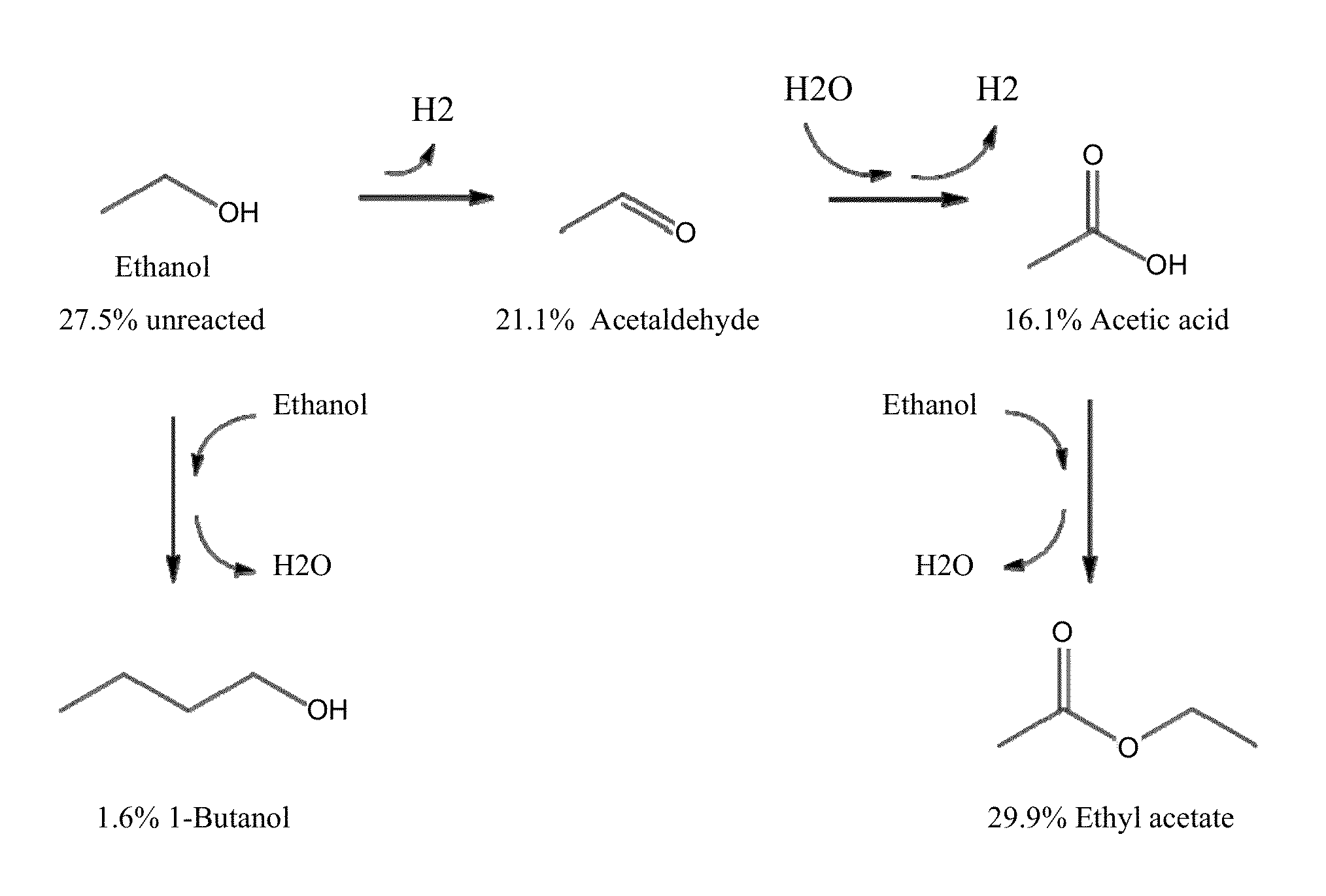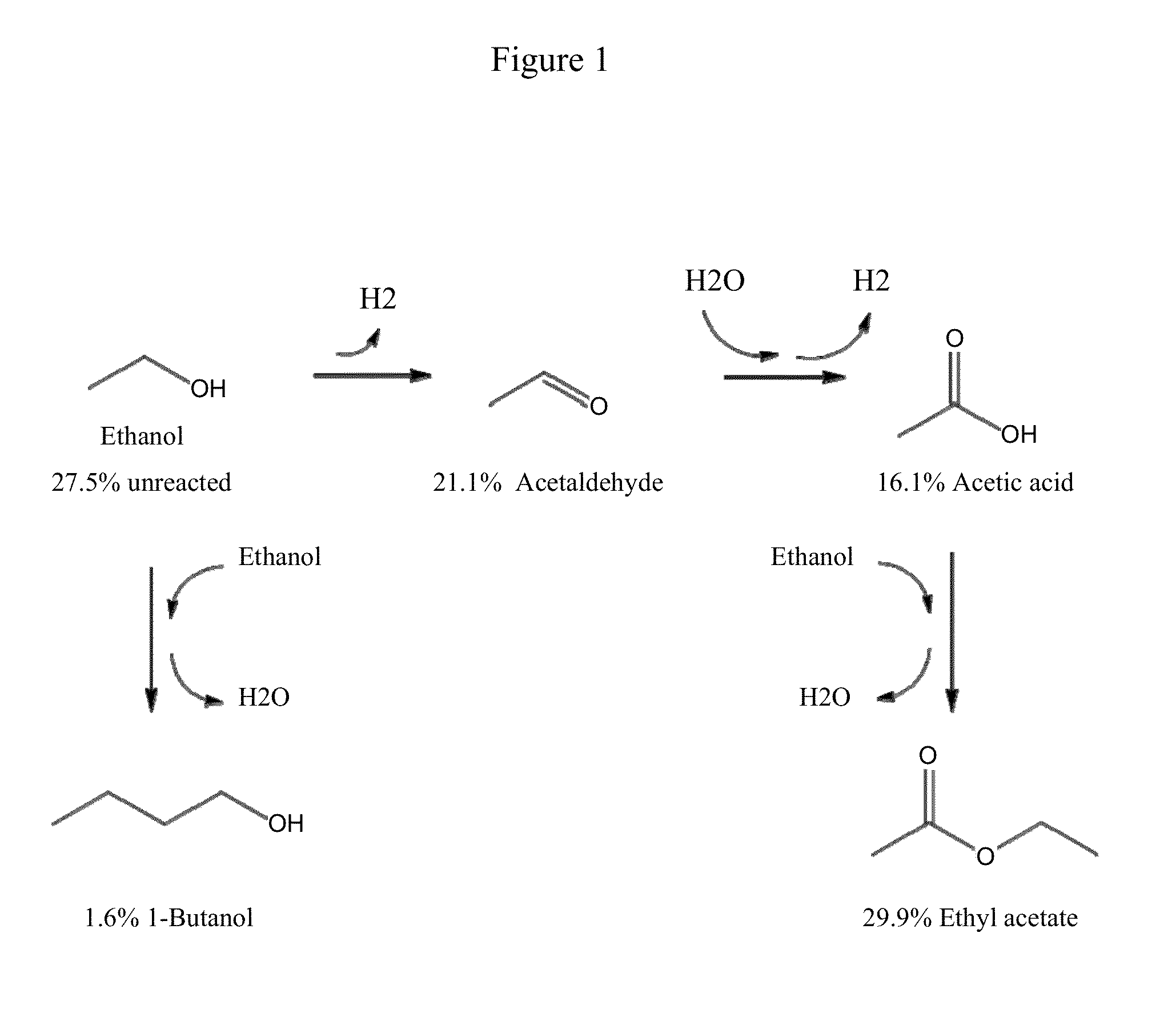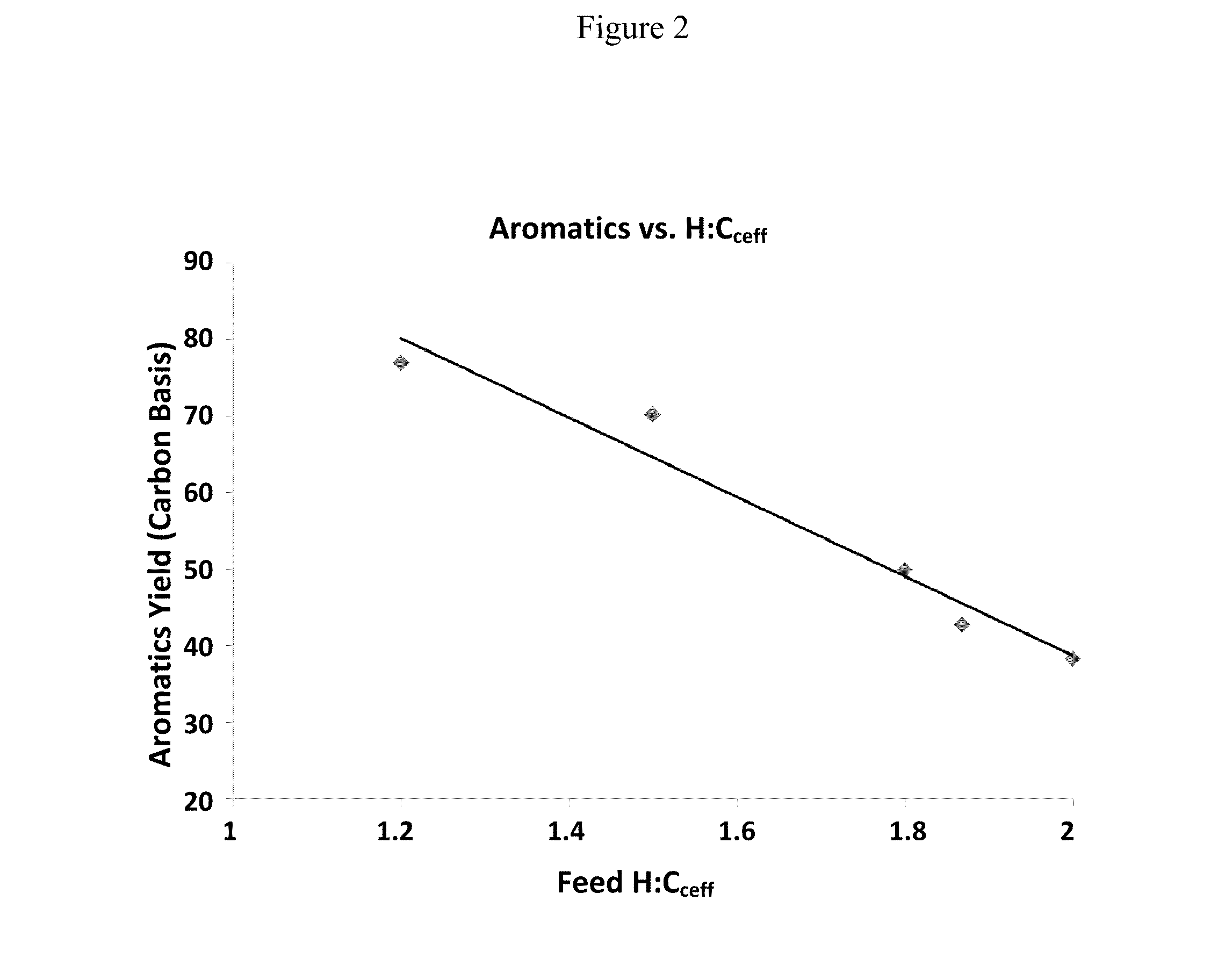Dehydrogenation of alkanols to increase yield of aromatics
- Summary
- Abstract
- Description
- Claims
- Application Information
AI Technical Summary
Benefits of technology
Problems solved by technology
Method used
Image
Examples
example 1
[0054]Copper modified monoclinic zirconia was prepared by adding an aqueous solution of copper nitrate to monoclinic zirconia (Saint-Gobain Norpro, Ohio) using an incipient wetness impregnation technique to achieve a target copper loading of 1, 2 and 5 wt %. The catalyst was dried overnight under vacuum at 110° C. and calcined at 400° C. under flowing air for 6 hours.
example 2
[0055]Copper nitrate (Acros, Geel, Belgium) was added to a gamma alumina support (Norpro Saint Gobain, Paris, France) using an incipient wetness impregnation technique to achieve a target Cu loading of 5 wt %. The catalyst was dried in an oven with an air purge at 120° C. and then calcined in the same oven with a temperature ramp of 2° C. / min to 550° C. and held for 7 hours.
example 3
[0056]Copper modified calcium doped gamma alumina catalyst was prepared by adding an aqueous solution of copper nitrate to calcium doped gamma alumina (Saint-Gobain Norpro, Ohio) using an incipient wetness impregnation technique to achieve a target copper loading of 2 wt %. The catalyst was dried overnight under vacuum at 110° C. and calcined at 400° C. under flowing air for 6 hours.
PUM
| Property | Measurement | Unit |
|---|---|---|
| Temperature | aaaaa | aaaaa |
| Temperature | aaaaa | aaaaa |
| Temperature | aaaaa | aaaaa |
Abstract
Description
Claims
Application Information
 Login to View More
Login to View More - R&D
- Intellectual Property
- Life Sciences
- Materials
- Tech Scout
- Unparalleled Data Quality
- Higher Quality Content
- 60% Fewer Hallucinations
Browse by: Latest US Patents, China's latest patents, Technical Efficacy Thesaurus, Application Domain, Technology Topic, Popular Technical Reports.
© 2025 PatSnap. All rights reserved.Legal|Privacy policy|Modern Slavery Act Transparency Statement|Sitemap|About US| Contact US: help@patsnap.com



